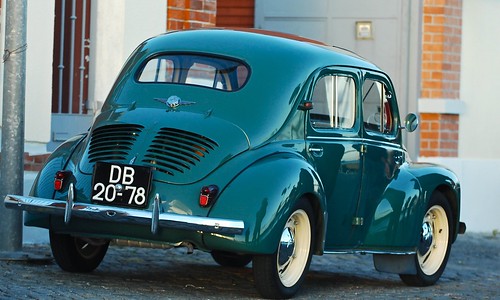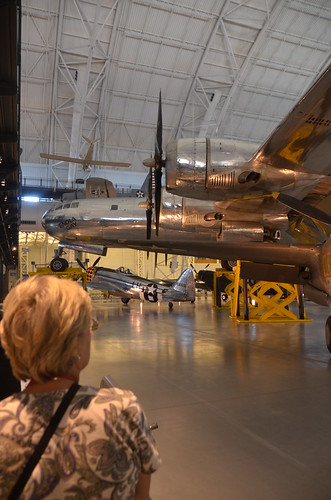Check out these machining manufacturer photos:
Image from web page 17 of “Scientific American Volume 85 Quantity 01 (July 1901)” (1901)
Image by World wide web Archive Book Images
Identifier: scientific-american-1901-07-06
Title: Scientific American Volume 85 Number 01 (July 1901)
Year: 1901 (1900s)
Authors:
Subjects: gas railroad munn cents steam companies american electric scientific american natural gas sheet metal sewing machine ten cents american supplement extended island soft coal cubic feet bituminous coal
Publisher:
View Book Web page: Book Viewer
About This Book: Catalog Entry
View All Pictures: All Pictures From Book
Click right here to view book online to see this illustration in context in a browseable on the internet version of this book.
Text Appearing Ahead of Image:
S OIL—SMELTER—MINES « DOUGLAS. LACEY&CO. ^ ItuiikerN, lir(»kerM, FImuI Ae^nt f Members N. V. Codsoli,luted St.H-k Kxcliaiine aud Los Angeles, ■W) fal. Stoi-k K.xfharifje. *? 68 BROADWAY and 17 NEW ST.. NEW YORK. ^ Divi«UMiiUi»Rying Mining, Oil and four^ Smelter Stocks^, U^ted aud Uu- <C^ lifted, Oiii Specialty. four^ Booklets providing our effective strategy for realizing ^ the massive it-ofits of legitimate mining. •i and ^ smelter investments, subscription blanks, complete Zi particulars, and so on., sent cost-free to any intereste* on ^ appltcatfon. ■♦f BUANtTlES-noston, Philadeliihia. Chicago. 4h rieveliind, Cincinnati, St. L«uis, Hartford and * New JIaveiL Conn. Prescott. Ariz.. Lus Angeles. *) Cal., St. .lohn, N. B., Montreal, Toronto, and ^ T.,oTi(loii. Eiigland. HOMER F. LIVERMORE MiGM grade: STEEL. MALLEABLE. GREY IRON,BRONZE, BRASS and ALUMINIUM CASTIWGS Sen.l Samples far Rates, Statiiif, Quantity Required.80 PEARL STREET. – – BOSTON, MASS.
Text Appearing After Image:
Potent, Itesijoiisive, Durable aud Effective. The ReevesVariable Speed Countershaft for securing any speed withoutchange of belt or loss of time. Es-pecially adapted for all types f)f Iron-witrking Machinery, Iron Lathes,IManei-s, Boiing Mills, Shapers. and so on.Cement, Machinery, ExperimentalMncbinery—in fact all kinds of ma-cliinery requiring a modify of s[ieetl.Witb it a lai^e increusc and a bettergrade tiE operate can be i>ro«uced. ZJT Send for haiiilsomclii iUustrate^icatalogue N. A. free. REEVES PULLEY CO. COLUMBUS. IND., U. S. A. Acetylene Generators ARE Ideal. Over ten,000 Machines Sold. They are endorsed by each and every user. Send for costs. Handsomely illustrated catalogue.District Hepresentativea all overthe world. EAQLE GENERATOR COMPA^Y, 319 N. 4th Street.St. Louis, Mo.
Note About Photos
Please note that these photos are extracted from scanned page pictures that may have been digitally enhanced for readability – coloration and look of these illustrations may not perfectly resemble the original work.
Image from web page 17 of “Scientific American Volume 85 Number 01 (July 1901)” (1901)
Image by Web Archive Book Photos
Identifier: scientific-american-1901-07-06
Title: Scientific American Volume 85 Number 01 (July 1901)
Year: 1901 (1900s)
Authors:
Subjects: gas railroad munn cents steam companies american electric scientific american organic gas sheet metal sewing machine ten cents american supplement extended island soft coal cubic feet bituminous coal
Publisher:
View Book Web page: Book Viewer
About This Book: Catalog Entry
View All Images: All Photos From Book
Click right here to view book on the web to see this illustration in context in a browseable on-line version of this book.
Text Appearing Before Image:
The No. 4YOST WRITING MACHINE The distinctive attributes of the Yost Ma-chine, permanent alignment, direct inking,lovely function, strength, simplicity, anddurability are shown in perfection in theNo. 4 Model. YostWritinglYlachineCo. NEW YORK CITY. LONDON, ENQ.
Text Appearing Following Image:
S OIL—SMELTER—MINES « DOUGLAS. LACEY&CO. ^ ItuiikerN, lir(»kerM, FImuI Ae^nt f Members N. V. Codsoli,luted St.H-k Kxcliaiine aud Los Angeles, ■W) fal. Stoi-k K.xfharifje. *? 68 BROADWAY and 17 NEW ST.. NEW YORK. ^ Divi«UMiiUi»Rying Mining, Oil and 4^ Smelter Stocks^, U^ted aud Uu- <C^ lifted, Oiii Specialty. 4^ Booklets providing our effective plan for realizing ^ the huge it-ofits of reputable mining. •i and ^ smelter investments, subscription blanks, full Zi particulars, and so forth., sent cost-free to any intereste* on ^ appltcatfon. ■♦f BUANtTlES-noston, Philadeliihia. Chicago. 4h rieveliind, Cincinnati, St. L«uis, Hartford and * New JIaveiL Conn. Prescott. Ariz.. Lus Angeles. *) Cal., St. .lohn, N. B., Montreal, Toronto, and ^ T.,oTi(loii. Eiigland. HOMER F. LIVERMORE MiGM grade: STEEL. MALLEABLE. GREY IRON,BRONZE, BRASS and ALUMINIUM CASTIWGS Sen.l Samples far Prices, Statiiif, Quantity Needed.80 PEARL STREET. – – BOSTON, MASS.
Note About Pictures
Please note that these pictures are extracted from scanned page photos that may have been digitally enhanced for readability – coloration and look of these illustrations might not perfectly resemble the original perform.
Image from web page 17 of “Scientific American Volume 85 Quantity 01 (July 1901)” (1901)
Image by Web Archive Book Photos
Identifier: scientific-american-1901-07-06
Title: Scientific American Volume 85 Number 01 (July 1901)
Year: 1901 (1900s)
Authors:
Subjects: gas railroad munn cents steam companies american electric scientific american all-natural gas sheet metal sewing machine ten cents american supplement long island soft coal cubic feet bituminous coal
Publisher:
View Book Web page: Book Viewer
About This Book: Catalog Entry
View All Images: All Pictures From Book
Click right here to view book online to see this illustration in context in a browseable on the web version of this book.
Text Appearing Before Image:
LESGHEN & SONS ROPE Owners and ManufacturersLESCHEN CO.S PATENT AUTOMATIC AERIAL
Text Appearing Following Image:
(Ira-ie Mark littgistered.) WIRE ROPE TRAMWAY -^^^o?JrT^og.cWIRE ROPE We also manufacture all types of « KODAK 99 Stands for allthat is Very best inPhotography To the perfection of Kodakconstruction, to the perfec=tion of the Kodak mechan=ism, to the perfection ofthe Kodak lenses, is due the triumph of Kodakerp All Kodaks I^oail in Daylight with our TransparentFilm Cartriilfjes. A number of designs use either films •rplates. Sixty-4 page cataiofjiie, tiescribiiig themin detail, free at the Kodak dealers or by mail. EASTMAN KODAK CO. Rochester, N. Y. .jFSSOPS STEEL^BV/r J^ FOR TOOLS. SAWS And so on. WM JESSOP A SONS L5 91 JOHN ST. NEW YORK PETER T. AUSTEN CHEMICAL Expert. Testing, Ierfei-ting, Introducing and Disposing ofChemical Patents, Processes. Il-oducts, horinulas. and so forth. Utilization of Wastes and Unapjjlied Subsiances. Im-provement and Invention of Processes ami Iniducts.Reduction of Manufacturing Costs. E.^perinieiital In-vestieation of rocluiical Issues. Workitig out hor-mulas tor Manu
Note About Images
Please note that these photos are extracted from scanned web page pictures that may have been digitally enhanced for readability – coloration and look of these illustrations may not completely resemble the original operate.



































